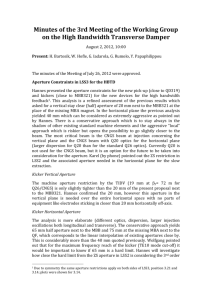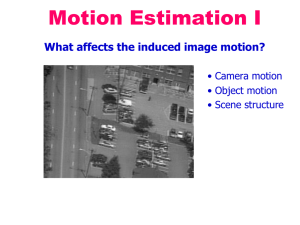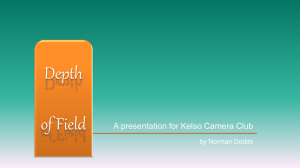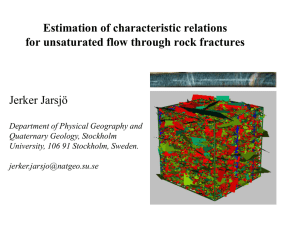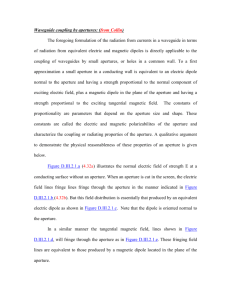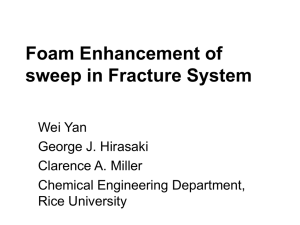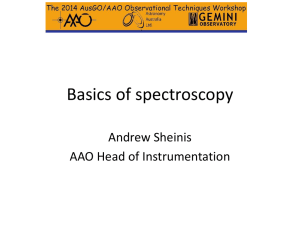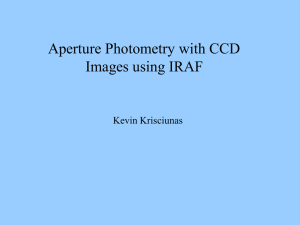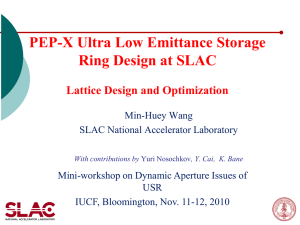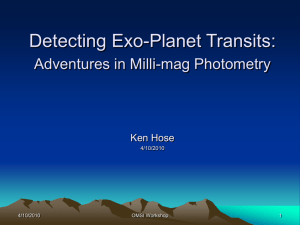Aperture correction, Upper limit, and Standardization
advertisement
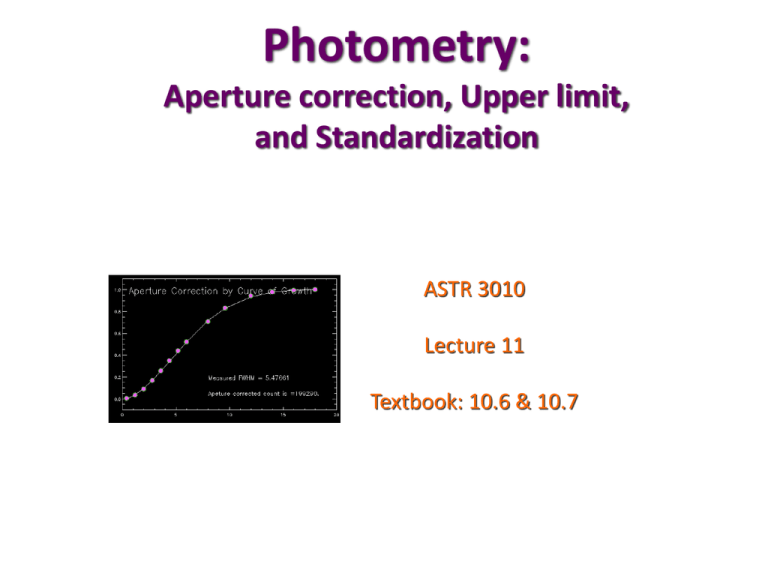
Photometry: Aperture correction, Upper limit, and Standardization ASTR 3010 Lecture 11 Textbook: 10.6 & 10.7 Aperture Correction Total enclosed counts within an aperture radius The need for an aperture correction arises due to the difference in aperture sizes of science targets (fainter) and of standard stars (very bright). Why different aperture size?? Signal Standard Stars (very bright) signal >> noise Signal / Noise Noise µ N pixels = (aperture radius) 2 = aperture radius Maximum S/N : faint science target Target Stars (faint) signal ≈ noise Signal Noise µ N pixels = (aperture radius) 2 = aperture radius Signal / Noise Aperture Photometry For optimal photometry, it is better to use a smaller aperture for the science targets and a larger aperture for the standard stars. PSF shape remains the same b/w target and standard star measurements. Aperture Correction Factor (r)= E(r)/E(∞), where E is an encircled energy. Aperture correction • aperture correction Inst. Flux of the Standard Star = Flux(rstd)*ap_correction(rstd) Inst. Flux of the Target Star = Flux(rtgt)*ap_correction(rtgt) rstd rtgt If standard and target are measured at the same aperture, there is no need for the aperture correction. True Flux of Target Star = Flux of Std. Star * (Inst. Flux of tgt / Inst. Flux of std.) Upper limit of an undetected source • In a digital image of your target, the object was not detected. The standard deviation of the image pixel values is p=3.56. What is the upper limit (3) for the brightness of your object? 0. The object was not detected because of the Poissonian noise from the sky 1. Expected sky flux = p2 2. For the source aperture of N pixels, expected total signal from the sky = N* p2 3. Uncertainty of this value = sqrt(N* p2 )=sqrt(N)*p 4. 3 sigma upper limit = 3*sqrt(N)*p What we measure (φarr) vs what we want to measure (φE). ISM Satm ( l,t,e,a) Sism ( l) Extra Galactic Matter Sexg ( l) jE ( l ) 1 jArrived ( l) = Satm ( l) · SISM ( l) · Sexg ( l) · · jE ((1+ z) l) 1+ z mPA = mOP + Aatm + Aism + Aexg + CPZ = mP + Aatm Photometric Reduction mPA = mOP + Aatm + Aism + Aexg + CPZ = mP + Aatm • mAP : instrumental magnitude measured inside the atmosphere • mP : instrumental magnitude measured outside the atmosphere Steps: 1. Preprocess images 2. Digital photometry (aperture or PSF) mAP 3. Compute the instrumental mag outside the atmosphere mP 4. Transform instrumental magnitudes to a standard system mPSTD 5. Derive astrophysical and astronomical corrections o o o Corrections for absorptions: Aism, Aexg Correction for wavelength shift: CPZ Extract astrophysical parameters (temp, metallicity, age, distance, etc.) Term Project Part I: Imaging Data • Imaging data can be copied from /home/astr3010/ImagingData at your home directory.. cp ../ImagingData/* . • Start the pre-processing of these CCD data. • Check “TermProject_photometry.pptx from the “lecture notes” page In summary… Important Concepts Important Terms • Aperture correction • Upper limit calculation • Aperture Correction Chapter/sections covered in this lecture : Not in the textbook

